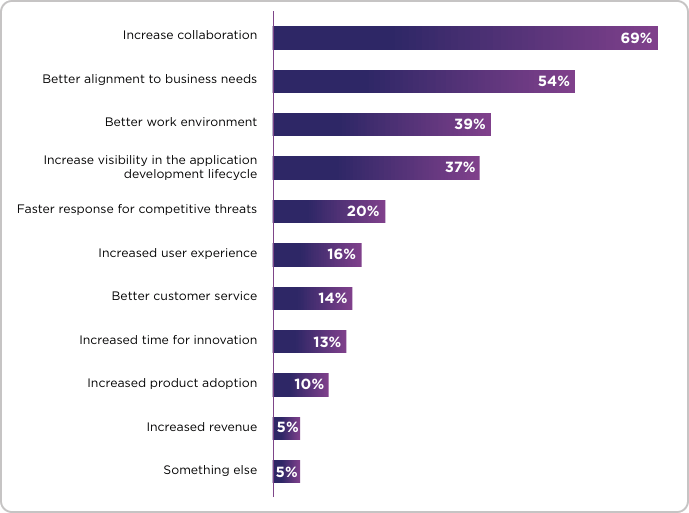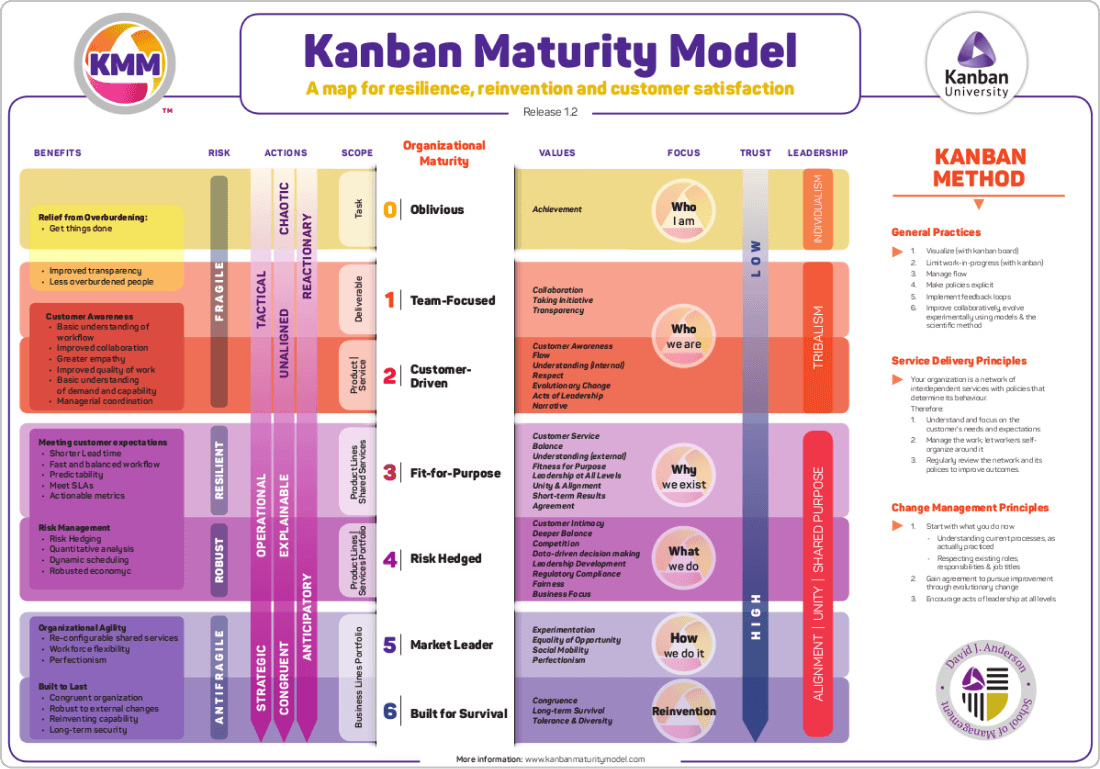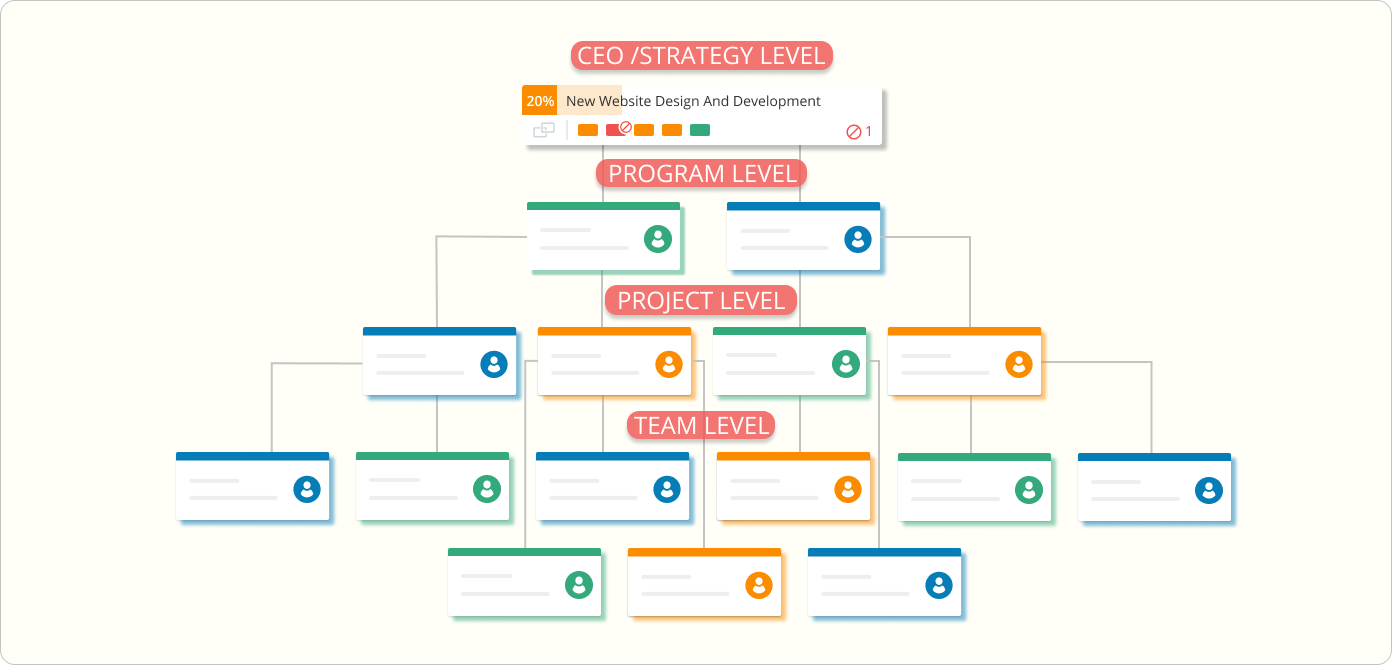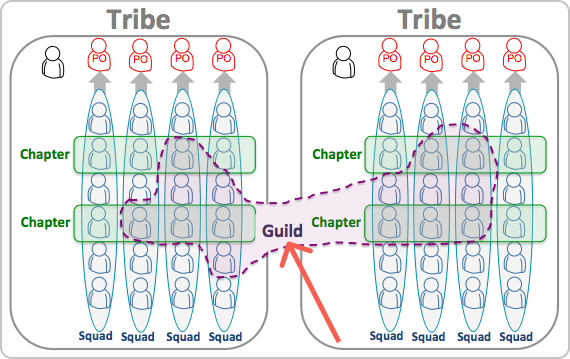You might have been part of an Agile team and experienced firsthand the benefits of agility, or perhaps you have helped an Agile transformation go smoothly. Either way, the ability to expand agility is now seen as a key to achieving business success.
What Is an Enterprise Agile Framework?
Enterprise Agile frameworks and methods are organizational models that scale up the Agile principles and practices across teams, departments, and business units. They are integral to expanding agility at the organization level. The need for scaling the Agile ways of thinking about work management brought to life Agile frameworks such as the Kanban Maturity Model (KMM), LeSS, SAFe, and Scrum@Scale (SaS), among others.
Let's discuss some of the most popular methods in more detail.
Why Do You Need to Scale Agile?
Businesses today need to adapt to emerging changes, innovate and deliver new products rapidly, accelerate improvements of existing services, achieve digital transformation, and be competitive at all times. It is, therefore, necessary to have not only flexible individual teams but also to create agility at the company level.
Scaling agility does not only affect the operational and delivery processes, true business agility transforms strategic thinking as well. Apart from IT functions in companies, a growing number of enterprises extend Agile practices to increase collaboration, better align work priorities to business goals, and overall create a better work place.

Reasons why businesses scale Agile across the enterprise (Image credit: 16th State of Agile Report)
Challenges of Scaling Agility
Adopting and scaling agility across teams and entire organizations does not happen overnight. In fact, being Agile is a continuous journey that never ends. And obviously, challenges are crawling from all sides.
Among the critical problems blocking the successful adoption of the Agile ways are:
- Lack of understanding of the Agile mindset;
- No collaboration between departments and teams;
- Lack of alignment between work priorities and business goals;
- Organizational resistance to change;
- Missing visibility into the work processes;
- No commitment to the Agile processes and practices.
No matter what challenges you face, there are different ways to solve them. However, you should remember that those companies that prevail in their scaling efforts all have a common trait – a sheer commitment to continuous improvement.
Top 5 Agile Scaling Frameworks and Methods
The role of Agile scaling methods is to address organizational challenges and facilitate the full-scale adoption of Agile values. Let’s uncover how the most prominent enterprise Agile frameworks can help you inspire agility in your company.
1. Kanban Maturity Model with Portfolio Kanban
Long before the appearance of the Agile Manifesto in 2001, manufacturing organizations recognized that to succeed, they needed structured working processes allowing them to deliver customer value with increased quality and faster. The “just-in-time” production was born, where production was based solely on actual market demand.
The development of the just-in-time production system, originating from the Toyota Production System, brought to light Kanban - an evolutionary approach to work management. Kanban highlights optimizing value delivery through continuous efforts to improve the way work is done, establish shared leadership at all levels, and focus on the customers’ demands.
One of the biggest myths that have circulated in the Lean/Agile community for years is that Kanban is just a board with sticky notes and is applicable only at the team level. However, the Kanban Maturity Model (KMM) has contributed to a variety of practices that promote agility through Kanban applied on a team level, across multiple teams, and at different organizational levels. The seven Kanban maturity levels describe how much an organization recognizes the need for structured work processes.
The KMM levels help to gradually develop agility through undisruptive and naturally fitting work practices.

Kanban Maturity Model scheme (Image credit: Kanban Maturity Model)
Thanks to Kanban practices, organizations manage to bring greater structure and visibility into their work processes. An optimized Kanban workflow can help you improve your teams’ delivery times by uncovering bottlenecks, decreasing wait and blocked times for work items, etc. Furthermore, the KMM helps to scale these results by creating a global connectedness between individual projects and strategic goals.
One way to enhance alignment between operations and strategic goals is through the Portfolio Kanban management concept. The holistic approach helps organizations visualize a portfolio of initiatives, projects, or other large pieces of work and connect them to their execution. Thanks to the increased level of work synchronization between multiple teams, businesses manage to evolve their organizational agility.
 Portfolio Kanban scheme
Portfolio Kanban scheme
2. SAFe (Scaled Agile Framework)
The Scaled Agile Framework (SAFe) is a set of Lean portfolio management and Agile project management practices utilized by organizations for scaling agility at the enterprise level. The approach was originally developed as a way to visualize how work flows from strategic management through execution out to the market. SAFe can be adopted in four configurations: on a team, program, large solutions, and portfolio level.
SAFe supports the organizational efforts to evolve agility by:
- promoting system thinking,
- aligning of all work around creating value,
- implementing fast learning cycles,
- cross-team collaboration around motivated individuals.
Furthermore, the framework tackles the time-to-market delivery by encouraging fast decision-making, effective cross-team communication, and keeping the focus on creating value for the customer. Shared responsibility and reducing waste from the work process also result in better quality and productivity.
The model is, however, criticized for its prescriptive nature in terms of roles and practices. The level of complexity and commitment required can be overwhelming for users.
3. LeSS (Large Scale Scrum)
The Large-Scale Scrum is a product development framework that applies regular Scrum to multiple teams. The approach promotes less prescriptive roles, events, management, and organizational structures. It is available for up to eight teams (first-level LeSS) and “Huge Less” (second-level LeSS) for organizations with multiple teams.
At its heart, LeSS can help organizations scale agility through diminishing organizational complexity, emphasizing cross-team collaboration, and self-organizing Agile teams.
4. Scrum@Scale (SaS)
Scrum at Scale is a product development framework for scaling agility across the company. The model is based on the Scrum framework applied to multiple teams and in complex environments. SaS promotes tight collaboration and coordination between Scrum teams for successful product delivery.
The leading principles of the Scrum at Scale framework include the presence of small Scrum teams and less hierarchical organization, which improves the pace of decision-making. The model introduces the Scrum Master Cycle and Product Owner Cycle to aid the synchronization of team efforts toward scaling agility.
5. Spotify Model (Not a Framework or a Set of Guidelines)
Spotify has developed a work structure designed to scale the adoption of Agile throughout the company. This model enables enhanced collaboration including transparency and strives to improve product development processes.
The model suggests organizational structures in the form of squads, tribes, chapters, guilds, alliances, and trios. It’s important to note that instead of guidelines, those are just an example of how scaling agility can happen in practice within a big organization. Spotify doesn’t prescribe a strict framework for scaling Agile as most teams use either Scrum or Kanban. The main idea of the model is to promote high levels of transparency, team autonomy, and less bureaucracy.
 Image Credit: Scaling Agile@Spotify (blog.crisp.se)
Image Credit: Scaling Agile@Spotify (blog.crisp.se)
Although the Spotify model provides a real-life example of scaling agility across the organization, it comes with its own limitations. As such, the squad’s dedication to specific functionalities can pose a threat to the integrity of the product architecture if updates are not implemented throughout all systems. Furthermore, keep in mind that the Spotify model is merely a way that the company managed to promote agility in their own environment, which does not imply that mirroring the same steps and practices should work in your world.
The First Steps in Scaling Agility
While there’s nothing wrong with applying a prescriptive model, it’d be a much safer approach to first examine your own environment. In other words, instead of reorganizing everything right off the bat, start with what you do now. Look for your sources of dissatisfaction, and analyze both incoming demand and your system’s capabilities to handle it. Put your workflows on display and get an idea of where you may need to improve things.
 Creating a Kanban system to analyze the end-to-end flow of work
Creating a Kanban system to analyze the end-to-end flow of work
Whatever the nature of your process is, you can first visualize it “as is” on Kanban boards and uncover some pain points. This way, you can significantly reduce the risk of resistance and even get your colleagues on board to get their initial feedback.
Eventually, you might decide to follow the evolutionary practices of the Kanban Maturity Model or go with a prescriptive framework such as SAFe. The idea is to prepare the groundwork and understand your true sources of dissatisfaction before embarking on a scaled Agile journey.
While there isn’t a one-size-fits-all approach to nurture both organizational and operational agility, it could be very dangerous to follow in the exact footsteps of somebody else. Organizations are like living organisms – they’re different in their nature, so don’t blindly rely on a framework that tells you what to do.
After all, true organizational agility can be achieved by continuously evolving your processes instead of hoping that what worked for someone else would work for you too.
We offer the most flexible software platform
for outcome-driven enterprise agility.
In Summary
Nowadays, it’s not enough to apply Agile practices within a single team, especially if you are a big organization or an enterprise. To achieve true adaptability and nimbleness in today’s competitive market, companies need to start integrating Agile across multiple teams and management levels. To achieve this, different Agile scaling models or frameworks come to help. Some of the most prominent ones are:
- Kanban Maturity Model (KMM)
- SAFe (Scaled Agile Framework)
- LeSS (Large Scale Scrum)
- Scrum@Scale (SaS)
- Spotify Model (example of a custom Agile scaling model)







 Portfolio Kanban scheme
Portfolio Kanban scheme Image Credit: Scaling Agile@Spotify (
Image Credit: Scaling Agile@Spotify ( Creating a Kanban system to analyze the end-to-end flow of work
Creating a Kanban system to analyze the end-to-end flow of work

